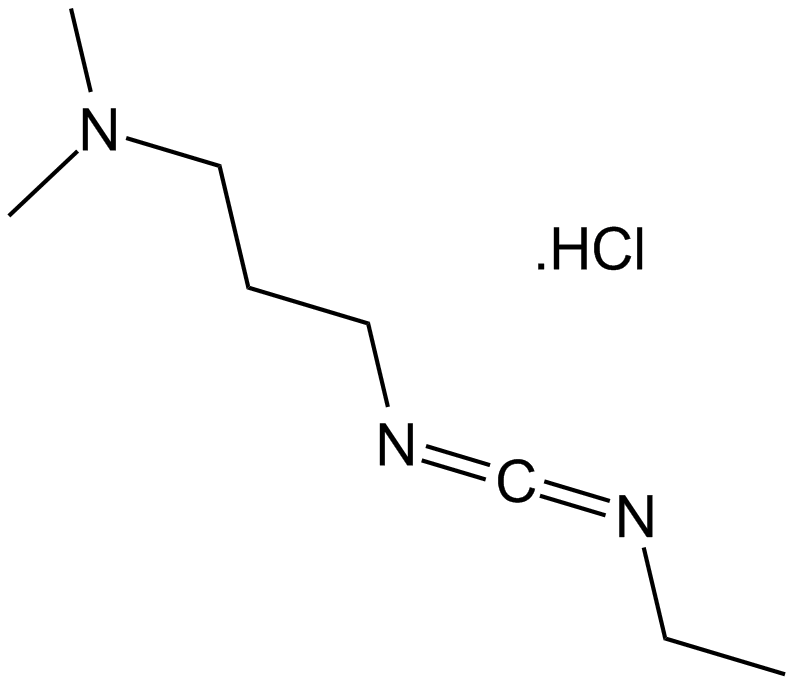EDC.HCl |
| Catalog No.GA11126 |
Products are for research use only. Not for human use. We do not sell to patients.

Cas No.: 25952-53-8
Sample solution is provided at 25 µL, 10mM.
IC50: Not available.
EDC.HCl, which is commonly regarded as carbodiimide reagents, serves as a very useful tool for the formation of amide bonds (peptide bonds) in an aqueous medium. As one of the carbodiimide reagents, it is also effectively applied in anhydroxydation, polynucleotide synthesis, esterification and lactonization.In addition, EDC.HCl is also widely used as water soluble condensing reagent. [1]
In vitro: Carbodiimide-mediated coupling method was one of the most traditional approaches for peptide-bond formation. With the aim to synthesis target compounds, carbodiimide reagents were added after thoroughly mixing of a carboxylic acid and an amine. After the reaction was accomplished, the carbodiimide reagent was then changed into its corresponding urea. [2] Recently, a simple and fast detection method using spectrophotometric flow injection analysis was developed. This method was based on the reaction between EDC.HCl and pyridine in acidic aqueous solution. After reaction at 40C for a while, the absorbance was measured at 400 nm. The calibration curve demonstrated a good linearity from 0 to 10% of EDC·HCl solutions with the following regression equation: y = 3.15 × 104x (x, % concentration of EDC·HCl; y, peak area). This approach served to monitoring the concentration of EDC·HCl after its reaction in water. [1]
In vivo: So far, no in vivo data has been reported.
Clinical trial: So far, no clinical trial has been conducted.
References:
[1]Kunihiko Seno, Kazuki Matumura, Mitsuko Oshima, and Shoji Motomizu. Spectrophotometric determination of 1-(3-Dimethylaminopropyl)-3-ethylcarbodiimide hydrochloride by flow injection analysis. Anal Sci. 2008 Apr; 24: 505-8.
[2] Jad YE, Khattab SN, Beatriz G. Torre DL, Govender T, Kruger HG, Faham AE and Albericio F. EDC·HCl and potassium salts of oxyma and oxyma-B as superior coupling cocktails for peptide synthesis. Eur J Org Chem. 2015 May; 2015(14): 3116-20.
Average Rating: 5 (Based on Reviews and 30 reference(s) in Google Scholar.)
GLPBIO products are for RESEARCH USE ONLY. Please make sure your review or question is research based.
Required fields are marked with *




















